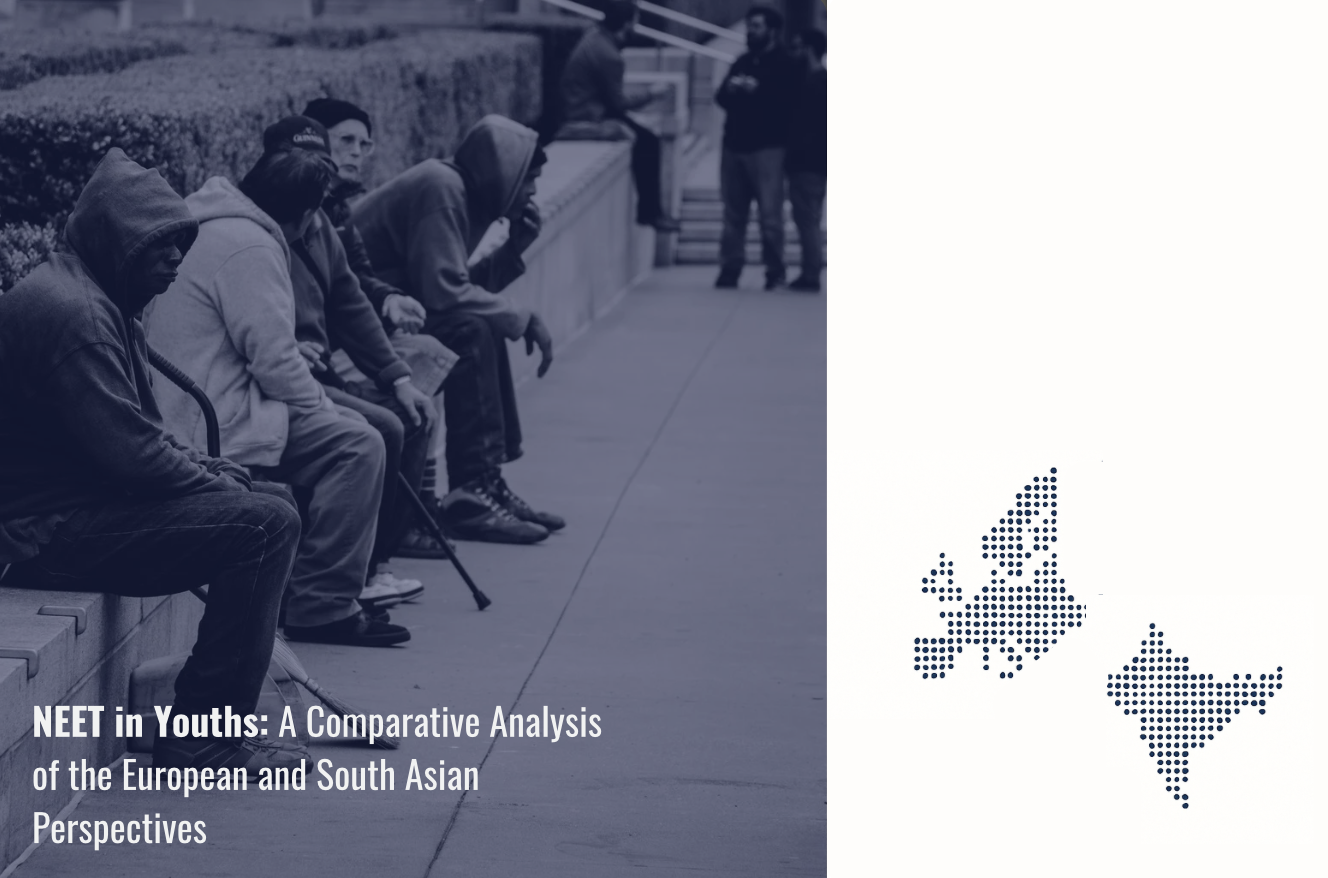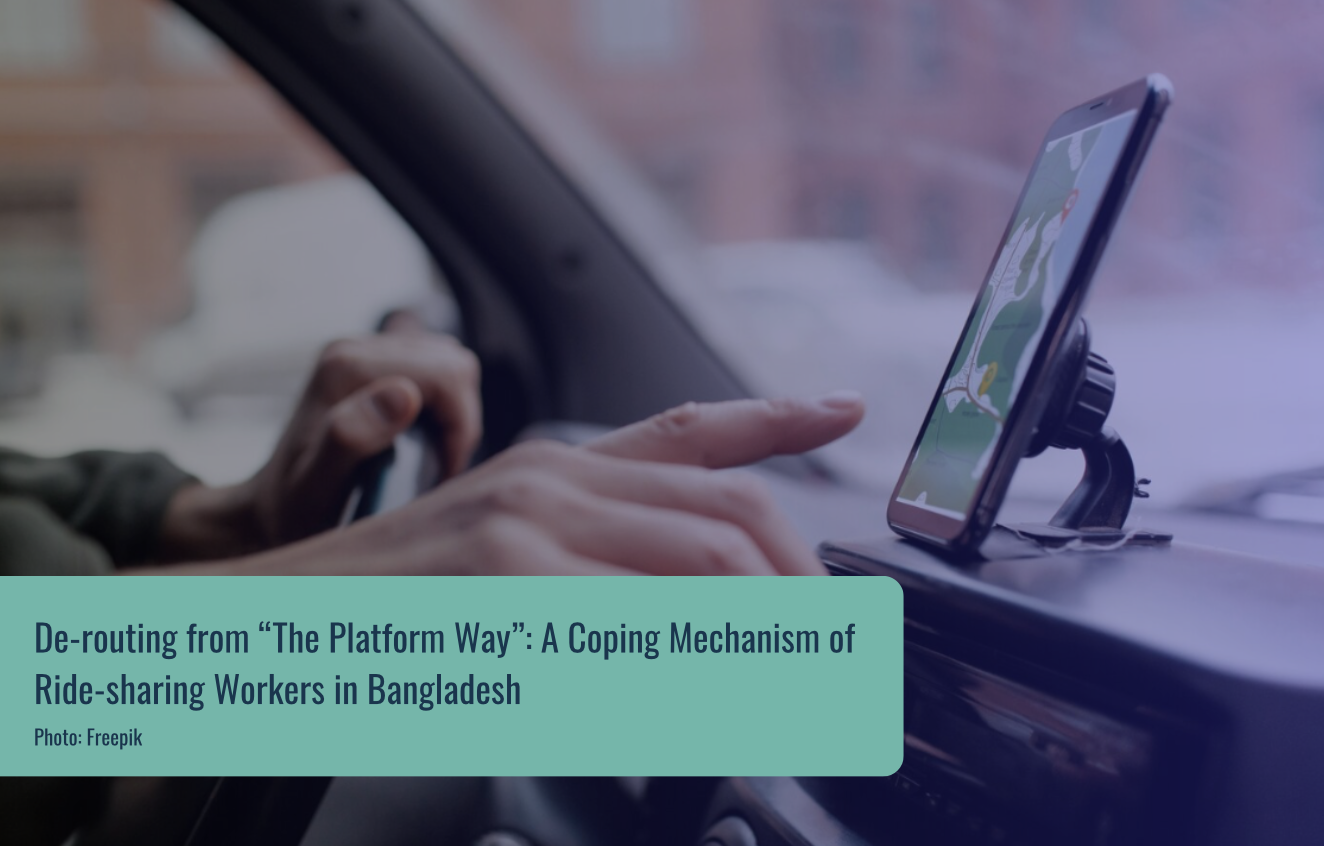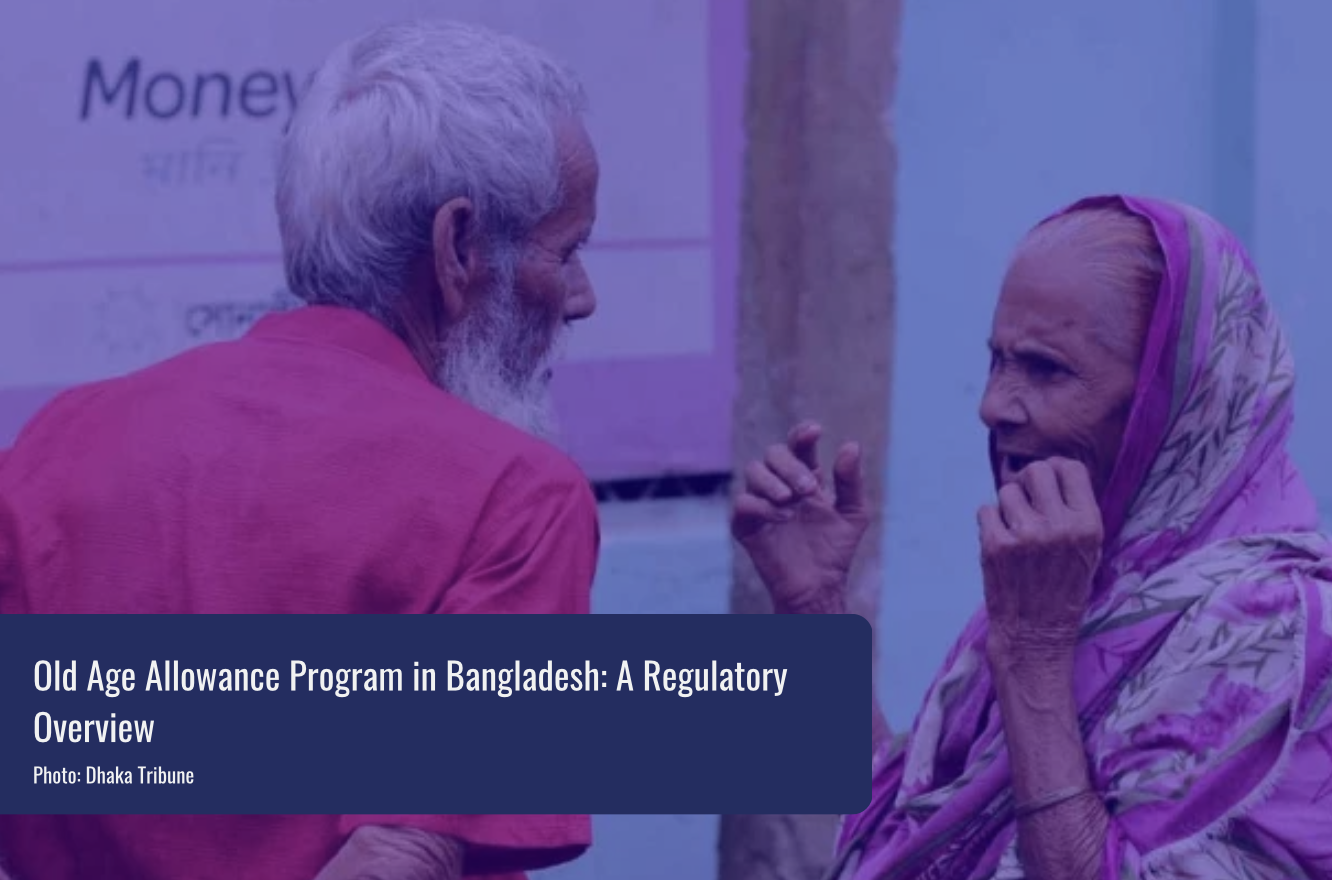NEET or youth not in education, employment or training has been a focal point for several studies pertaining to the labor dynamics. The constraints of determining what constitutes as employed, unemployed, underemployed or even looking for work has given rise to the concept of NEET.
Author: Shahriar Rabab
It is essentially a new way to define poverty and unemployment. While it might seem to have zero connection to poverty indicators superficially, as we will explore in this paper, the percentage of NEET is much higher in underdeveloped and developing countries compared to the developed counterparts. This leads to the idea that NEET can be connected to the overall economic well-being on both micro and macro levels.
But the implications of NEET aren’t limited to underdeveloped countries only. While small, NEET exists in the developed countries, especially some Nordic countries like Belgium and Germany in a relatively high level. This further leads to the question that how much does NEET actually affect the overall economic landscape of a country and how can it be offset?
Background of NEET
The concept of NEET was first introduced back in 1990 in the United Kingdom. The term was further popularized after it was used in the annual report of the Social Exclusion Unit in 1999. NEET are youths aged between 16 to 24 who are neither in education or training nor in any kind of formal employment.
Depending on the country, the definition of NEET changes mostly on the age range with the core idea being same across the board. Historically, a negative correlation existed between NEET and economic well-being. A lower percentage of NEET suggests that the economy is efficient with much of its young population being engaged in economically productive activities. But that doesn’t mean countries with higher economic output do not have higher NEETs.
The Case of Europe
Historically, Europe had a fluctuating share of NEET between 15 to 20%. While this number is relatively large, it still doesn’t compare with the likes of underdeveloped or developed countries where the percentage is even higher.
Source: EU Commission/Eurostat
Among the European countries, the lowest NEET percentage is seen in the Nordic and European Union enlisted countries. The combined NEET percentage for the 28 EU countries stood at 16.5% in 2008 which is aggregate lower compared to the global average.
Several policy side initiatives acted as the key determinant for the lowered NEET percentage in the EU region.
In April 2013, the European Commission’s proposal to the Council of the European Union to implement a Youth Guarantee in all Member States was adopted. Reducing the number of NEETs is an explicit policy objective of the Youth Guarantee. This initiative aimed to ensure that all young people aged 15–24 receive a good-quality offer of employment, continued education, apprenticeship or traineeship within four months of becoming unemployed or leaving formal education. The roll-out of the Youth Guarantee across Member States, via the Youth Employment Initiative, has contributed to improving the situation on the ground, reducing the number of NEETs.
In December 2016, the Commission launched the initiative ‘Investing in Europe’s Youth’, a renewed effort to support young people. Given the positive impact of the Youth Guarantee up to that point, the Commission increased the finances available for the Youth Employment Initiative until 2020 to encourage more effective outreach to young people.
A new EU Youth Strategy was adopted in 2018 and sets out a framework for cooperation with Member States on their youth policies for the period 2019–2027. The strategy focuses on three core areas of action, centered around the words ‘engage, connect, empower’. Meanwhile, COVID-19 is having a grave impact on apprenticeships and training. To aid the economic recovery from the pandemic, on 1st July 2020 the new Commission launched a Youth Employment Support package to provide a ‘bridge to jobs’ for the next generation. The Commission put forward a proposal for a Council Recommendation on ‘A Bridge to Jobs – Reinforcing the Youth Guarantee’, to replace the 2013 Recommendation. It extends the age range covered by the Youth Guarantee from age 24 to 29.
But that doesn’t necessarily mean that the reduction has been universal. Italy even though being part of EU and part of the policy initiatives, still has some of the highest NEET at over 28%.
Exploring the root cause behind such a high rate, four key determinants were found.
- In search of employment (Accounts for 41%)
- In search of opportunity (Accounts for 25%)
- Disengaged People (Accounts for 15%)
- Unavailable People (Accounts for 19%)
What’s alarming here is that even though a fair share of the population is in search of employment and opportunity, the majority of this group makes up with males. On the other hand, female accounts for over 80% in the disengaged and unavailable group.
This means that with the growing age, the disparity among the NEET based on gender has only widened.
Source: EU Commission/Eurostat
The deference isn’t limited to just Italy as most European countries sees a high level of female NEET compared to their male counterparts.
So the challenge isn’t limited to finding an effective solution to reduce the NEET but also to reduce the disparity based on gender.
The Case of South Asia
The problem of NEET is even more prevalent in developing nations. But for the sake of relevance, this paper will entail the situation prevalent in South Asian countries.
Its already established that the gender gap is a key constraint when it comes to NEET in youths even in developed countries like the EU. While the gap is tangible in developed nations, the gap is even more stark in the developing nations, especially from the context of South Asia.
Source: Youth NEET in South Asia (Aslan 2019)
So why is NEET a much greater problem from the context of South Asian economy compared to European Economies? The answer lies in demographic dividend.
European countries have an aggregate population of over 20% who are over the age of 65, that is people who are not in the workforce anymore. In contrast, the South Asian population combinedly has over 50% of working age population with the number said to rise in the coming several decades (Carcillo and Königs, 2015).
The pace of growth in the working-age population does not necessarily imply a near-equivalent increase in the number of people actively seeking work. Conservative social attitudes towards female workforce participation prevail across much of the region, albeit with variation in degree—Afghanistan and Pakistan, for example, are much more socially conservative than Sri Lanka. As their populations grow richer, negating the necessity for multiple income-earners in a household, these views can manifest in a decline in the proportion of women working. In India, for example, the labor-force participation rate for women aged 1564 dropped to 24.4% in 2012, from 34.2% in 2005, according to data from the International Labor Organization (ILO).
Nevertheless, the biggest challenge for countries across the region is creating a sufficient number of jobs to employ their growing populations. Unlike China, which relied on manufacturing to generate most jobs during its economic boom from 1978 to 2010, most economies in South Asia have relatively underdeveloped manufacturing sectors (Bruno, Marelli and Signorelli, 2014). This partly reflects legislation and bureaucratic restrictions that make hiring and firing extremely complex. Bangladesh has developed a large-scale export-oriented garment manufacturing sector, which has created a sizeable number of work opportunities for the relatively young population, albeit at an exploitative rate.
Another problem from the context of South Asia is the labor force participation rate. The gender-based disparity is disproportionately higher in the case of South Asia compared to its European counterparts (Sudan, 2021). This further leads to the understanding that South Asian economies, even though standing at a favorable position population wise, fails to extract the benefit due to various social constraints that creates barrier for female entry to the workforce.
Despite the obvious hindrances, there aren’t any widespread policy adaption from the South Asian economies akin to the European counterparts. As a result, there exists a much more consequential gap for the South Asian countries compared to European countries.
With reducing the high female share in NEET, it will be impossible for the South Asian countries to maintain their growth trajectory or even benefit from the window of opportunity created by the demographic dividend (Khatun and Saadat, 2020).
Conclusion and Recommendations
The case of NEET directly impacts the overall output of any economy. It’s easy to understand that the more a country can utilize its working age population, the better the economic dividend will be.
European countries recognize the NEET issue even though their NEET percentage aren’t alarmingly high. But in comparison, the South Asian countries aren’t able to capitalize any policy to reverse the high NEET problem.
The policy adaptations should follow on three distinct aspects – social security, education, entry to suitable and sufficient work opportunities. But these are just an overarching theme of NEET combating policies.
South Asian economies will also need to revolutionize the industrial approach to create more jobs for the working age population. There’s no point in formulating inclusive policies if there aren’t jobs available to accommodate the workforce.
Beyond that, the education policies should be more streamlined to align with the available job market. Incentives should be provided so that students do not leave education and alternative training opportunities should also be widened.
Countries can also focus to increase the expenditure on the active labor market policies to better enhance the work opportunities. Additionally, there should be policies to include women in the LFS through formal channels. While this will require policy as well as paradigm shift towards gender inclusivity, now is a right time than ever to take the initiative.
References
- Carcillo, S. and Königs, S., 2015. NEET Youth in the Aftermath of the Crisis: Challenges and Policies. Available at SSRN 2573655.
- Buheji, M., 2019. Discovering pathways for eliminating NEET and youth future type of poverty. International Journal of Human Resource Studies, 9(3), pp.320-340.
- Roberts, S., 2011. Beyond ‘NEET’and ‘tidy’pathways: considering the ‘missing middle’of youth transition studies. Journal of youth studies, 14(1), pp.21-39.
- Bruno, G.S., Marelli, E. and Signorelli, M., 2014. The rise of NEET and youth unemployment in EU regions after the crisis. Comparative Economic Studies, 56(4), pp.592-615.
- Khatun, F. and Saadat, S.Y., 2020. Fourth industrial revolution, technological advancement and youth employment: A South Asian perspective. South Asia Economic Journal, 21(1), pp.58-75.
- Majid, N., 2021. Young persons not in employment and education (NEET) in India: 2000-2019.
- Aslan, G., 2022. Enhancing youth and women’s financial inclusion in South Asia. Cogent Economics & Finance, 10(1), p.2136237.
- Khatun, F. and Saadat, S.Y., 2020. State of Youth Employment in South Asia. In Youth Employment in Bangladesh (pp. 41-48). Palgrave Macmillan, Singapore.
- Chapter 3 summary: NEET in developing and emerging countries: What do we know and what can be done about it? (provisional title). Author: Niall O’Higgins (ilo.org)
- Share of youth not in education, employment or training, total (% of youth population) – South Asia | Data (worldbank.org)
- Sudan, F.K., 2021. Technological Disruptions, Youth Unemployment and Vocational Education Challenges in South Asia: A Short Report. Global Economics Science, pp.80-97.
- 1 in 6 young people not in employment or education – Products Eurostat News – Eurostat (europa.eu)
- Bangladesh BD: Share of Youth Not in Education, Employment or Training: Total: % of Youth Population | Economic Indicators | CEIC (ceicdata.com)





